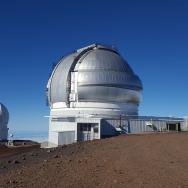Ancient grains discovered in Australian meteorite reveal ‘baby boom’ in star formation
Scientists with the University of Chicago and Field Museum have discovered stardust that formed 5 to 7 billion years ago—the oldest solid material ever found on Earth.
The grains of stardust were trapped inside meteorites long ago—even before the sun formed—where they remained unchanged for billions of years, until one such meteorite fell 50 years ago in Australia. These “time capsules” offer clues about what was going on in our patch of the universe before the sun formed; for example, the grains suggest a surprising boom in star formation.
“This is one of the most exciting studies I’ve worked on,” said Philipp Heck, associate professor at the University of Chicago, curator at the Field Museum and lead author of a paper published Jan. 13 in the Proceedings of the National Academy of Sciences. “These are the oldest solid materials ever found, and they tell us about how stars formed in our galaxy.”
Though they may seem fixed to humans, stars have life cycles. They’re born when bits of dust and gas floating through space find each other and heat up; they burn for millions to billions of years, and then they die. When they die, they pitch the particles that formed in their winds out into space, and those bits of stardust eventually form new stars, along with new planets and moons—as well as meteorites.
But such “presolar” grains are hard to come by. They’re rare—found only in about 5% of meteorites that have fallen to Earth, and they’re tiny—a hundred of the biggest ones would fit on the period at the end of this sentence. But the Field Museum has the largest portion of the Murchison meteorite, a treasure trove of presolar grains that fell in Australia in 1969 and that the people of Murchison, Victoria made available to science. Presolar grains for this study were isolated from the Murchison meteorite for this study about 30 years ago at the University of Chicago.
“It starts with crushing fragments of the meteorite down into a powder,” said Jennika Greer, a graduate student at the Field Museum and the University of Chicago and co-author of the study. “Once all the pieces are segregated, it’s a kind of paste, and it has a pungent characteristic—it smells like rotten peanut butter.”
This “rotten-peanut-butter-meteorite paste” was then dissolved with acid, until only the presolar grains remained.










